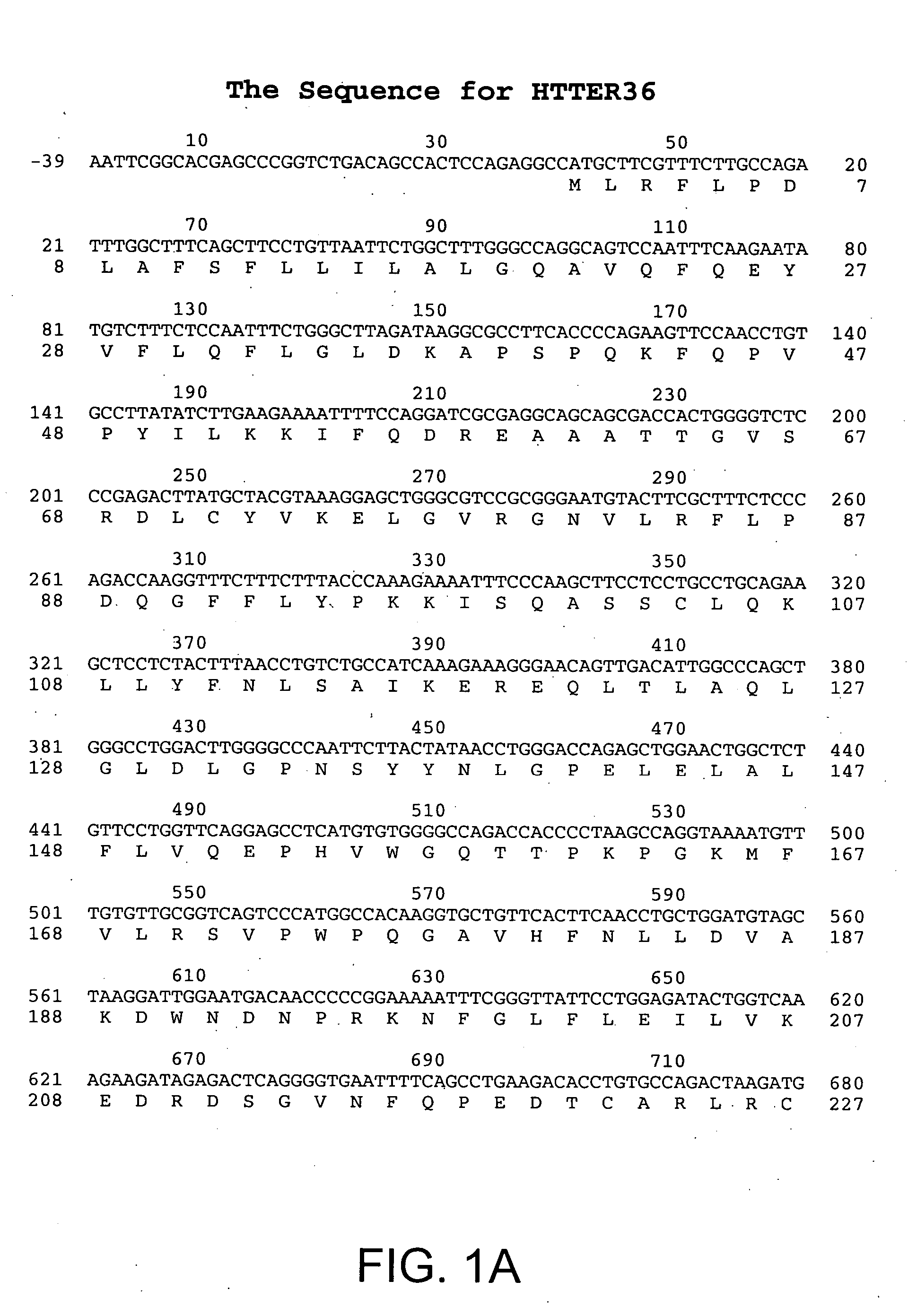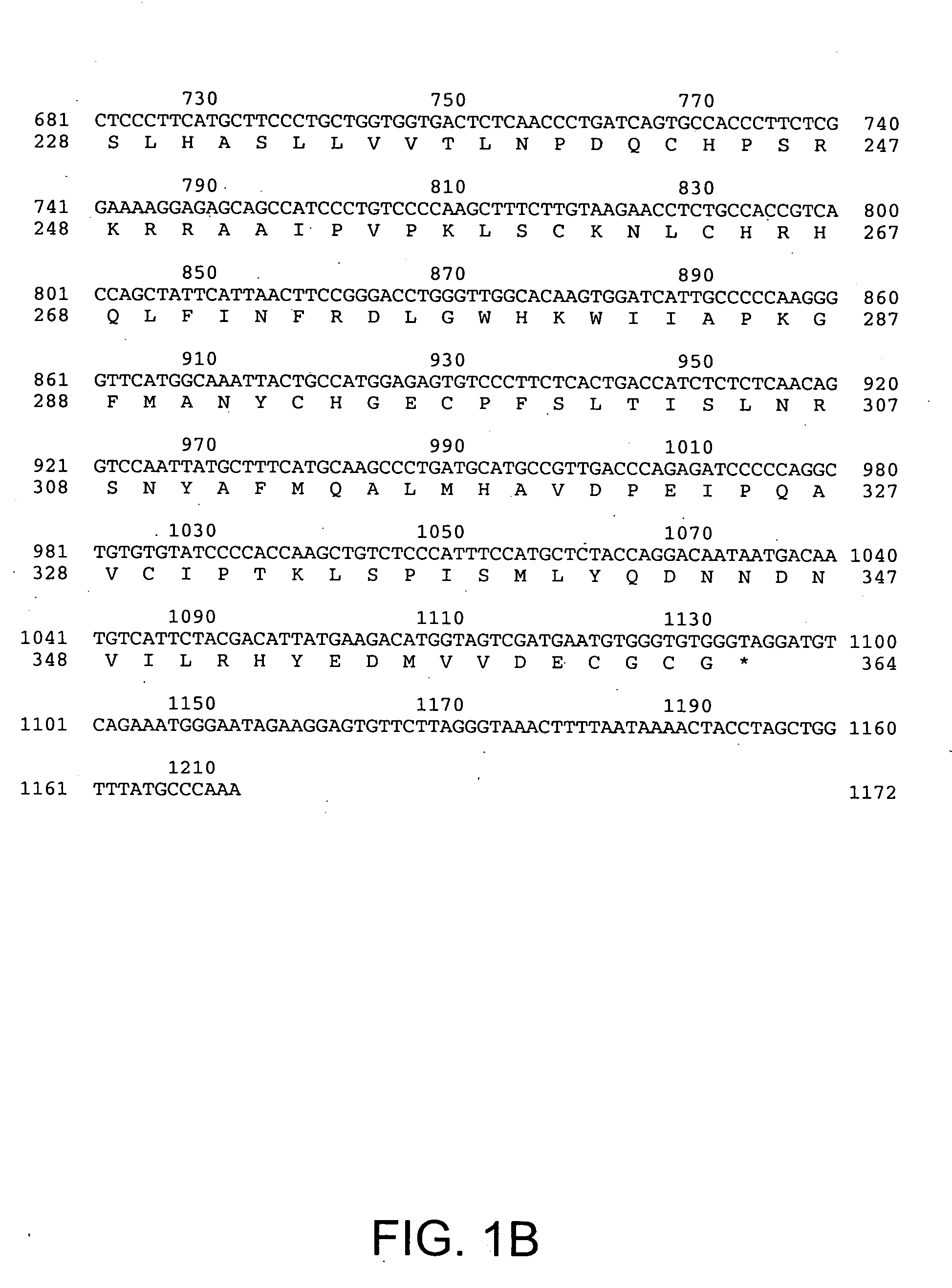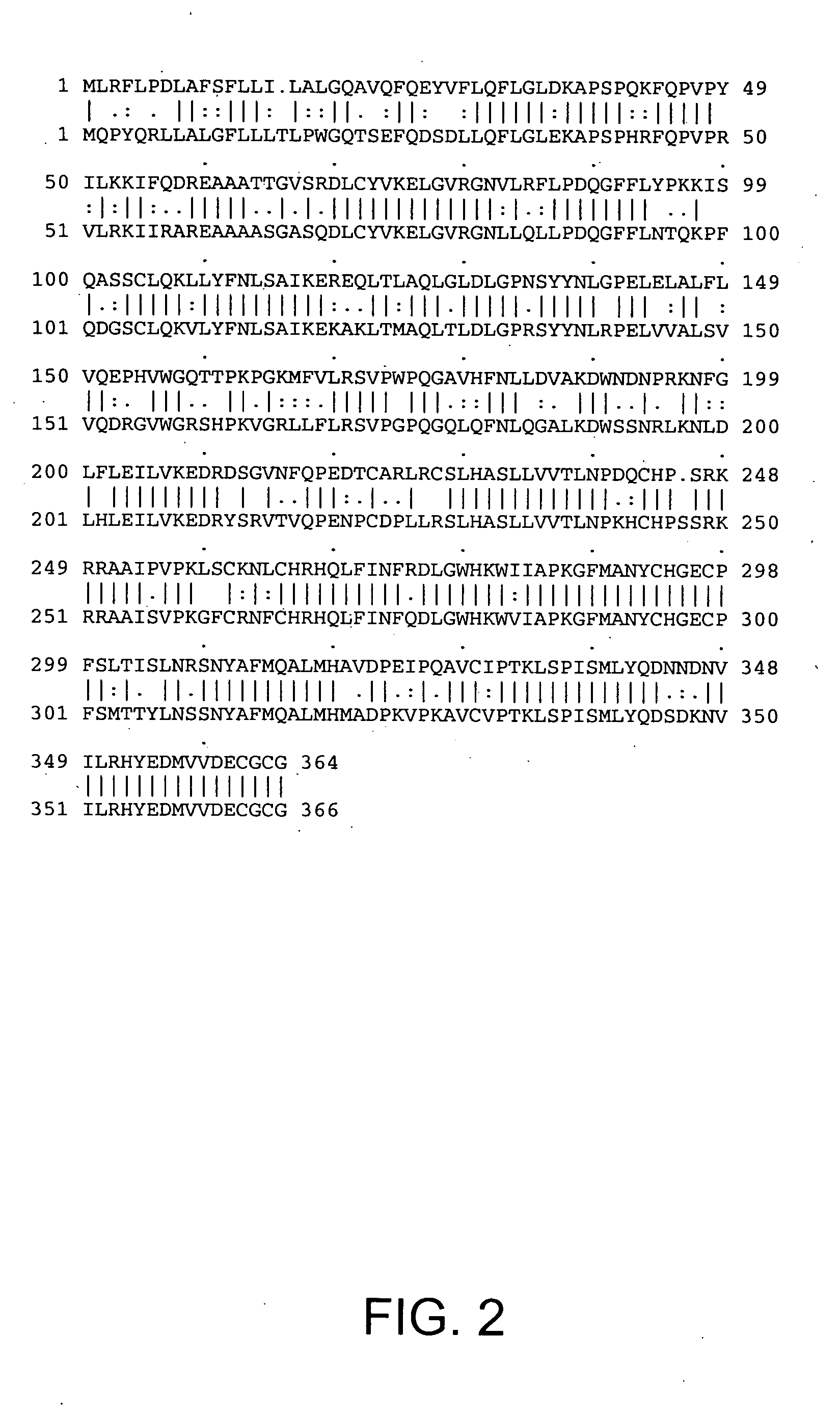Growth factor HTTER36
a growth factor and htter36 technology, applied in the field of newly identified polynucleotides and polypeptides, can solve the problems of increased blood pressure, changes in blood pressure, childhood morbidity, etc., and achieve the effect of stimulating weight loss and reducing excessive appeti
- Summary
- Abstract
- Description
- Claims
- Application Information
AI Technical Summary
Benefits of technology
Problems solved by technology
Method used
Image
Examples
example 1
Bacterial Expression and Purification of Mature HTTER36 (GDF3)
[0159] The DNA sequence encoding HTTER36 (GDF3), ATCC # 97349, was initially amplified using PCR oligonucleotide primers corresponding to the 5′ sequences of the processed HTTER36 protein and the vector sequences 3′ to the HTTER36 gene. Additional nucleotides corresponding to HTTER36 were added to the 5′ and 3′ sequences respectively. The 5′ oligonucleotide primer has the sequence 5′ GAAAGGATCCGCAGCCATCCCTGTCCCCAAACTTTCTTGT 3′ (SEQ ID NO:3) contains a BamHI restriction enzyme site (in bold) followed by 18 nucleotides of HTTER36 coding sequence starting from nucleotide 791 of FIGS. 1A-B (SEQ ID NO:1). The 3′ sequence 5′ TCCTTCTATTCAAGCTTCTGACATCCTACCCACACCCACA 3′ (SEQ ID NO:4) contains complementary sequences to a Hind III site and is followed by 15 nucleotides of HTTER36 beginning at nucleotide 1121, and a stop codon. The restriction enzyme sites correspond to the restriction enzyme sites on the bacterial expression vect...
example 2
Cloning and Expression HTTER36 (GDF3) Using the Baculovirus Expression System
[0162] The DNA sequence encoding the HTTER36 protein, ATCC # 97349, is amplified using PCR oligonucleotide primers corresponding to the 5′ and 3′ sequences of the gene.
[0163] The primers used are: 5′ CAGGGATCCGCCATCATGCTTCGTTTCTTGCCAGA 3′ (SEQ ID NO:5) contains the underlined Bam HI site an efficient signal for the initiation of translation in eukaryotic cells, a start codon (bold) and 17 bps of HTTER36 (GDF3) coding sequence. The 3′ primer has the sequence 5′ CTTCGGTACCCATTTCTGACATCCTACCCACAC 3′ (SEQ ID NO:6) contains the underlined Asp718 site, and 23 nucleotides complementary to the 3′ end of the HTTER36 (GDF3) sequence beginning at nucleotide 1126.
[0164] The amplified sequences are isolated from a 1% agarose gel using a commercially available kit (“Geneclean,” BIO 101 Inc., La Jolla, Calif.). The fragment is then digested with the endonucleases BamHI and Asp718 and then purified again on a 1% agarose...
example 3
Expression of Recombinant HTTER36 (GDF3) in CHO Cells
[0173] The vector pC1 is used for the expression of the HTTER36 (GDF3) protein. Plasmid pC1 is a derivative of the plasmid pSV2-dhfr [ATCC Accession No. 37146]. Both plasmids contain the mouse dhfr gene under control of the SV40 early promoter. Chinese hamster ovary- or other cells lacking dihydrofolate activity that are transfected with these plasmids can be selected by growing the cells in a selective medium (alpha minus MEM, Lift Technologies) supplemented with the chemotherapeutic agent methotrexate. The amplification of the DHFR genes in cells resistant to methotrexate (MTX) has been well documented (see, e.g., Alt, F. W., Kellems, R. M., Bertino, J. R., and Schimke, R. T., 1978, J. Biol. Chem. 253:1357-1370, Hamlin, J. L. and Ma, C. 1990, Biochem. et Biophys. Acta, 1097:107-143, Page, M. J. and Sydenham, M. A. 1991, Biotechnology Vol. 9:64-68). Cells grown in increasing concentrations of MTX develop resistance to the drug b...
PUM
| Property | Measurement | Unit |
|---|---|---|
| Fraction | aaaaa | aaaaa |
| Fraction | aaaaa | aaaaa |
| Weight | aaaaa | aaaaa |
Abstract
Description
Claims
Application Information
 Login to View More
Login to View More - R&D
- Intellectual Property
- Life Sciences
- Materials
- Tech Scout
- Unparalleled Data Quality
- Higher Quality Content
- 60% Fewer Hallucinations
Browse by: Latest US Patents, China's latest patents, Technical Efficacy Thesaurus, Application Domain, Technology Topic, Popular Technical Reports.
© 2025 PatSnap. All rights reserved.Legal|Privacy policy|Modern Slavery Act Transparency Statement|Sitemap|About US| Contact US: help@patsnap.com



